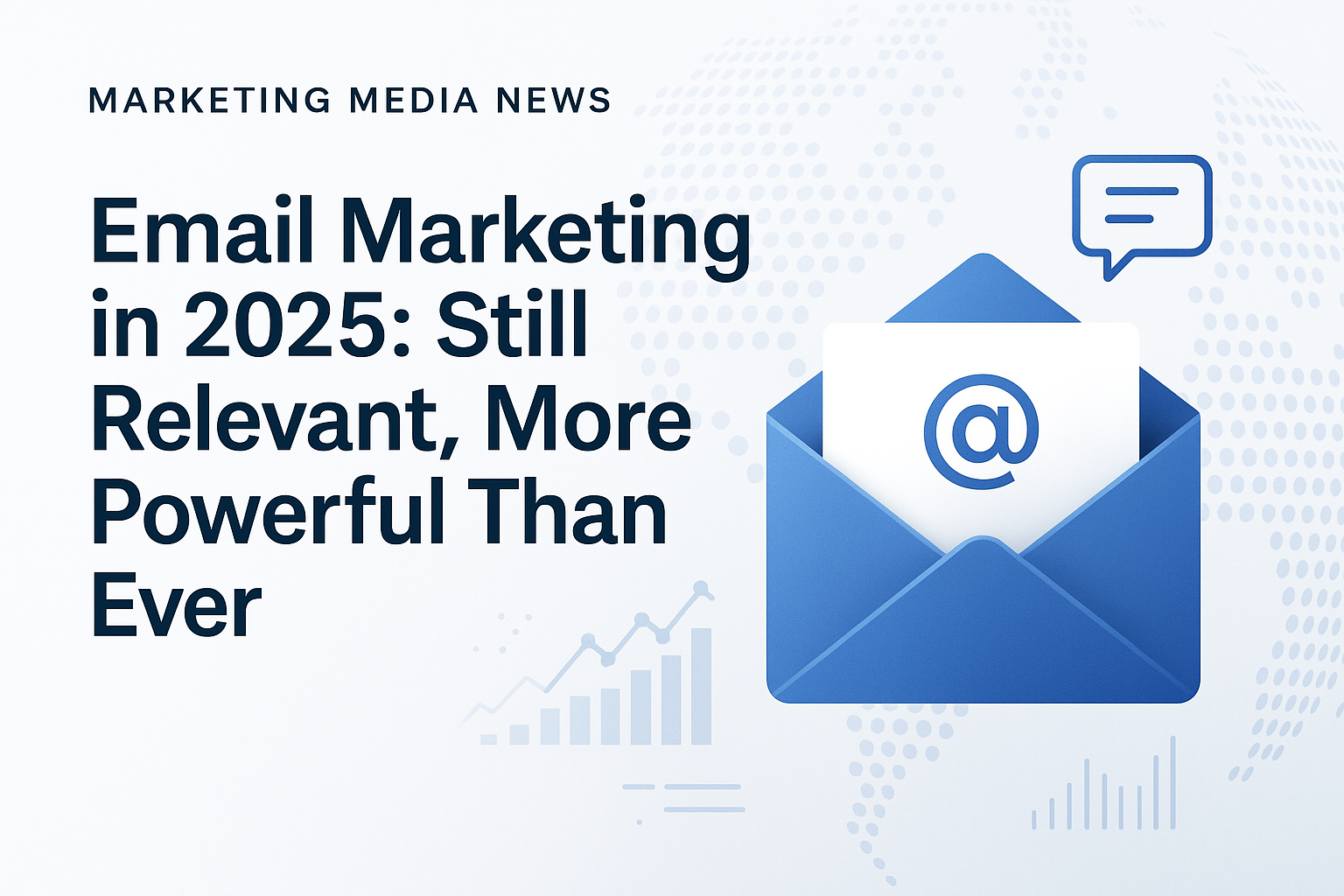In an era dominated by AI-driven content, short-form video, and constantly shifting algorithms, email marketing remains one of the most effective and reliable tools in a brand’s communication strategy. While newer platforms continue to emerge and trends evolve rapidly, email has proven its resilience — not by staying the same, but by evolving alongside user expectations and technological advancements.
The ROI Remains Unmatched
Email marketing continues to deliver one of the highest returns on investment across all digital channels. According to recent studies, the average return is estimated at $36–$40 for every $1 spent, depending on the industry. As advertising costs rise and organic social reach declines, email stands out as a cost-effective and dependable channel for engagement and conversion.
A Channel You Own
Unlike social media platforms where content visibility is dictated by algorithms, email is a direct, permission-based line to your audience. It’s a channel marketers fully control — from content to timing — and one that doesn’t rely on third-party platforms to reach subscribers. In a digital landscape where control and privacy are increasingly important, this independence is a major advantage.
Smarter Personalization Through Automation
Thanks to advancements in AI and marketing automation, email campaigns in 2025 are more personalized and efficient than ever. Brands can now deliver tailored messages based on user behavior, preferences, and past interactions. Whether it’s a welcome sequence, product recommendations, or re-engagement flows, personalized email journeys improve customer experience and boost conversion rates.
Simplicity and Authenticity Outperform Overproduction
Design trends in email marketing have shifted toward minimalism. Research shows that plain-text or lightly formatted emails often perform better than overly designed layouts. Consumers are more likely to engage with messages that feel personal and authentic — emails that read as though they came from a trusted individual, not a corporate entity.
The Return of the Newsletter
Email newsletters are experiencing a renaissance. With growing skepticism toward ads and algorithm-driven feeds, consumers are increasingly seeking curated, high-quality content delivered directly to their inbox. Successful newsletters today prioritize value, insight, and storytelling over frequent promotional messaging, positioning brands as thought leaders and reliable sources of information.
A Strategic Link Between Content and Conversion
Email marketing plays a critical role in tying together various elements of a content strategy. Blog posts, videos, case studies, and social media campaigns can all funnel into email, where the relationship with the audience is nurtured over time. When executed properly, email serves as the bridge between brand awareness and customer action.
Practical Tips for Successful Email Marketing in 2025
If you’re ready to elevate your email strategy, here are some actionable steps to implement right away:
- Segment Your Audience Avoid one-size-fits-all blasts. Group subscribers based on behavior, demographics, or engagement level to deliver more relevant content.
- Write Like a Human Use natural, conversational language. Emails that feel personal tend to perform better than overly polished corporate messages.
- Optimize Subject Lines Your subject line is your first (and often only) chance to grab attention. Keep it short, clear, and curiosity-driven. Test different styles regularly.
- Focus on Value First, Sales Second Provide useful content — insights, tips, exclusive resources — before asking for a sale. Build trust and loyalty through value.
- Keep It Mobile-Friendly Over 70% of emails are opened on smartphones. Use responsive design, short paragraphs, and clear call-to-action buttons for the best mobile experience.
- Test and Improve ConstantlyA/B test subject lines, designs, send times, and content types. Track what works — then do more of it.
- Respect the Inbox Send at the right frequency. Too much, and you’ll get unsubscribed. Too little, and you risk being forgotten. Find your rhythm.
- Use Clear, Compelling CTAs Every email should have a purpose. Whether it’s reading an article, scheduling a call, or buying a product — make the next step obvious and easy.
- Track the Right Metrics Focus on engagement metrics like open rate, click-through rate (CTR), conversion rate, and list growth. These tell the real story.
- Make Unsubscribing Easy A smooth opt-out process shows respect — and it helps maintain a healthy, engaged list.
Conclusion
Despite the constant evolution of digital marketing, email remains a cornerstone of effective communication. Its continued success lies in its adaptability — in shifting from static, promotional blasts to dynamic, personalized, and value-driven messages. For brands that invest in understanding their audience and delivering thoughtful content, email marketing in 2025 is not just relevant — it is essential.
For companies seeking to strengthen their direct-to-customer relationships, there has never been a better time to revisit and refine their email marketing strategy.



